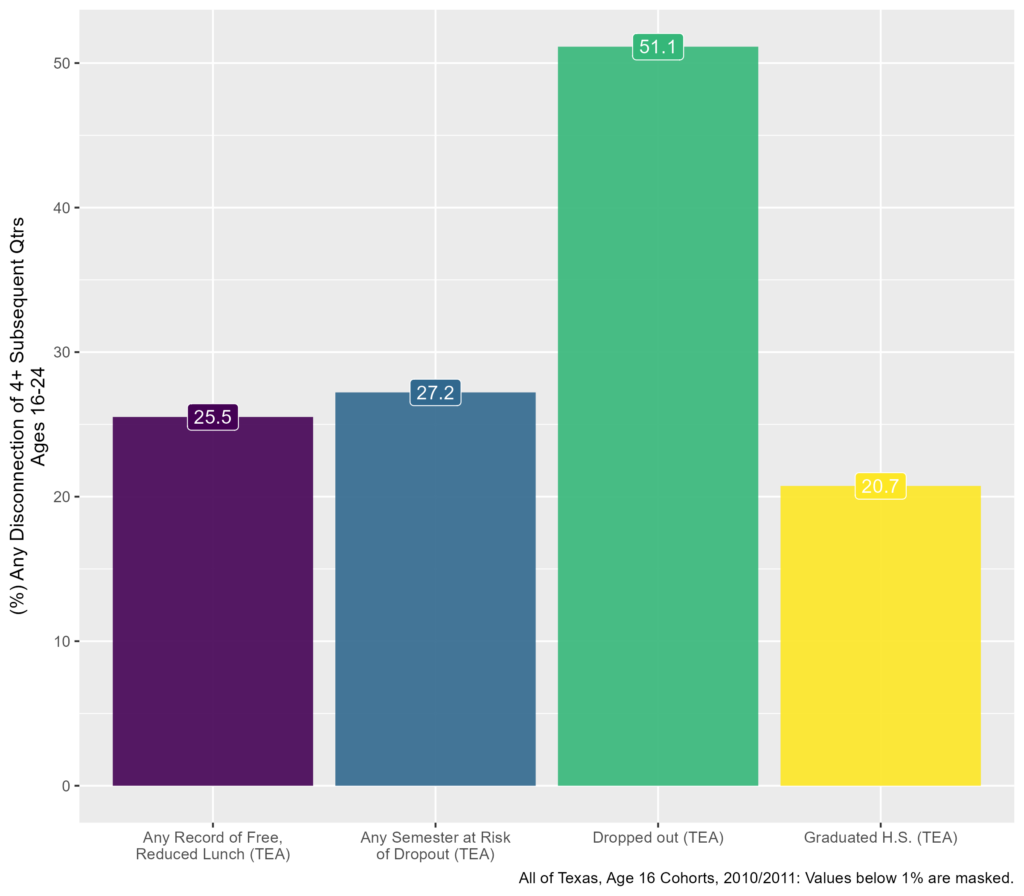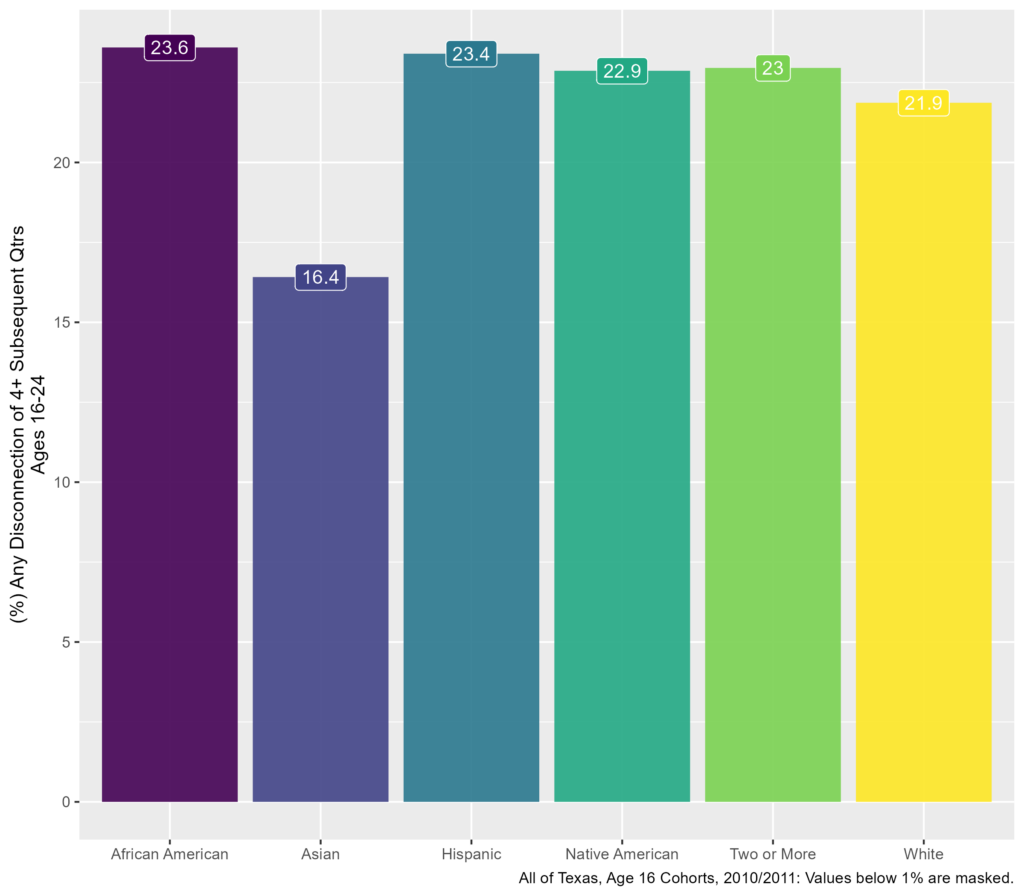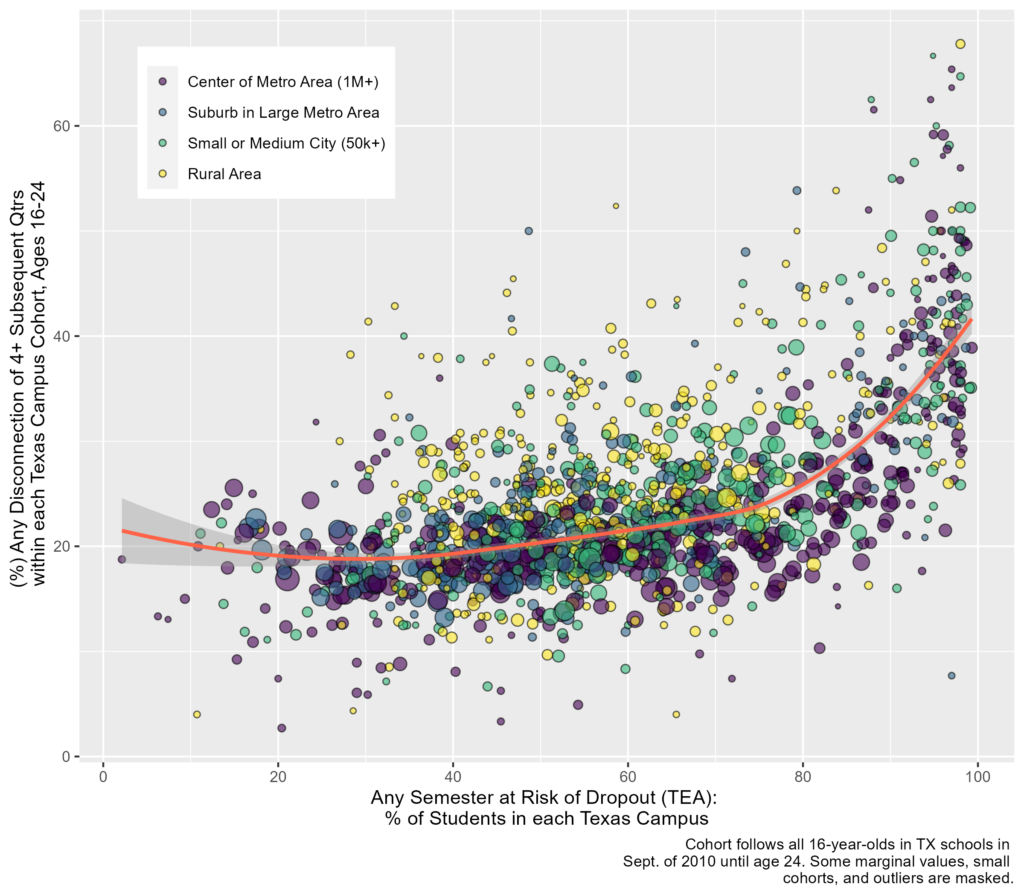Exploring How Campus characteristics Influence Youth Disconnection in Texas
This section examines retrospective data on persistent disconnection (see definitions) for individuals with distinct demographic and academic backgrounds and similar data with academic attributes and disconnection aggregated to the campus level.
The following figure demonstrates the high degree of variation in disconnection experienced by youth with different secondary education experiences. These groups are not mutually exclusive, meaning an individual who was ever flagged as at-risk of dropout by the TEA system could later drop out or graduate and would be included in the additional subgroup. Graduates unsurprisingly have the lowest rates of persistent disconnection during the panel (20.7%), while individuals with purely structural disadvantages (any record of free/reduced lunch) experienced disconnection at a 20% higher rate (25.5%). Individuals flagged as at-risk of not meeting standards by the TEA experienced disconnection at more than 25% higher the rate than the graduates group (27.2%). Those who dropped out had substantially higher rates than the other groups (51.1%). While it is tempting to assume the period of the dropout, itself, can explain this, we show in other sections that those who drop out continue to have higher rates of disconnection thought the panel.
A challenge with these indicators is that they are confounded with additional factors. One ESTOY component under development will use econometric models to better disentangle these effects.
Rates of Opportunity Youth Disconnection by Academic Status

The following data examines differences among racial/ethnic groups. There is little variation explained here compared with the academic factors with one exception: Asian-American Youth have substantially lower rates of retrospective persistent OY. We revisit this topic and explore an explanation in the panel analysis section.
Rates of Opportunity Youth Disconnection by Race/Ethnicity

The remaining two figures aggregated the retrospective measures of persistent disconnection to the campus level (vertical, y-axis) and explore the importance of two of the factors above. Each point is a campus, and each student in the data is nested within the campus of their final appearance in the data. The size of the point represents the relative size of campus, and the color shows the Census Bureau’s urban-rural category for the county where the campus is located.
The following figure places campus rates for the TEA’s “at-risk” measure on the x-axis. The increasing red line follows the expected value of the rate of disconnection for campuses with a given rate of youth ever flagged as at-risk of not meeting standards. While there is a clear relationship, many campuses appear to outperform their peer institutions, while others exhibit the opposite, suggesting that this measure can only explain part of the youths’ eventual disconnection. One key takeaway is a relative increase in the slope of the line as the rate of at-risk youth approaches 80% within a campus. Thus, this indicator’s explanatory power at the aggregated campus level is most powerful in circumstances of wide-spread academic issues.
Rates of Opportunity Youth Disconnection in Texas Campuses & TEA’s “At Risk” Designation

The final component tests the relationship between rates of any persistent disconnection over the panel (y-axis) and economic hardship in a campus. While consistently positive across the range of increasing rates of economic disadvantage, the relationship is weaker than in the previous plotted data. Nor is there strong evidence of a take-off point in the relationship in this case.
Examining these factors separately provides insight; however, we anticipate greater incite as we move toward the end of ESTOY and complete a person-level analysis that considers these and many other factors simultaneously.
Rates of Opportunity Youth Disconnection in Texas Campuses & TEA’s Free/Reduced Lunch Designation

